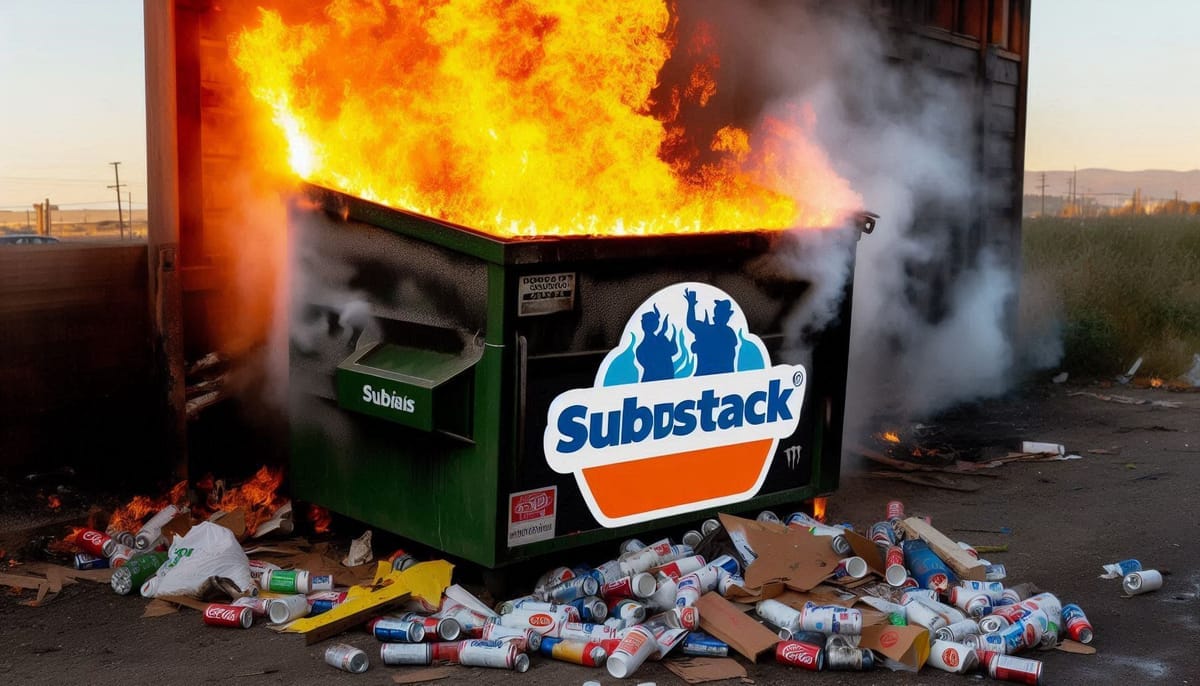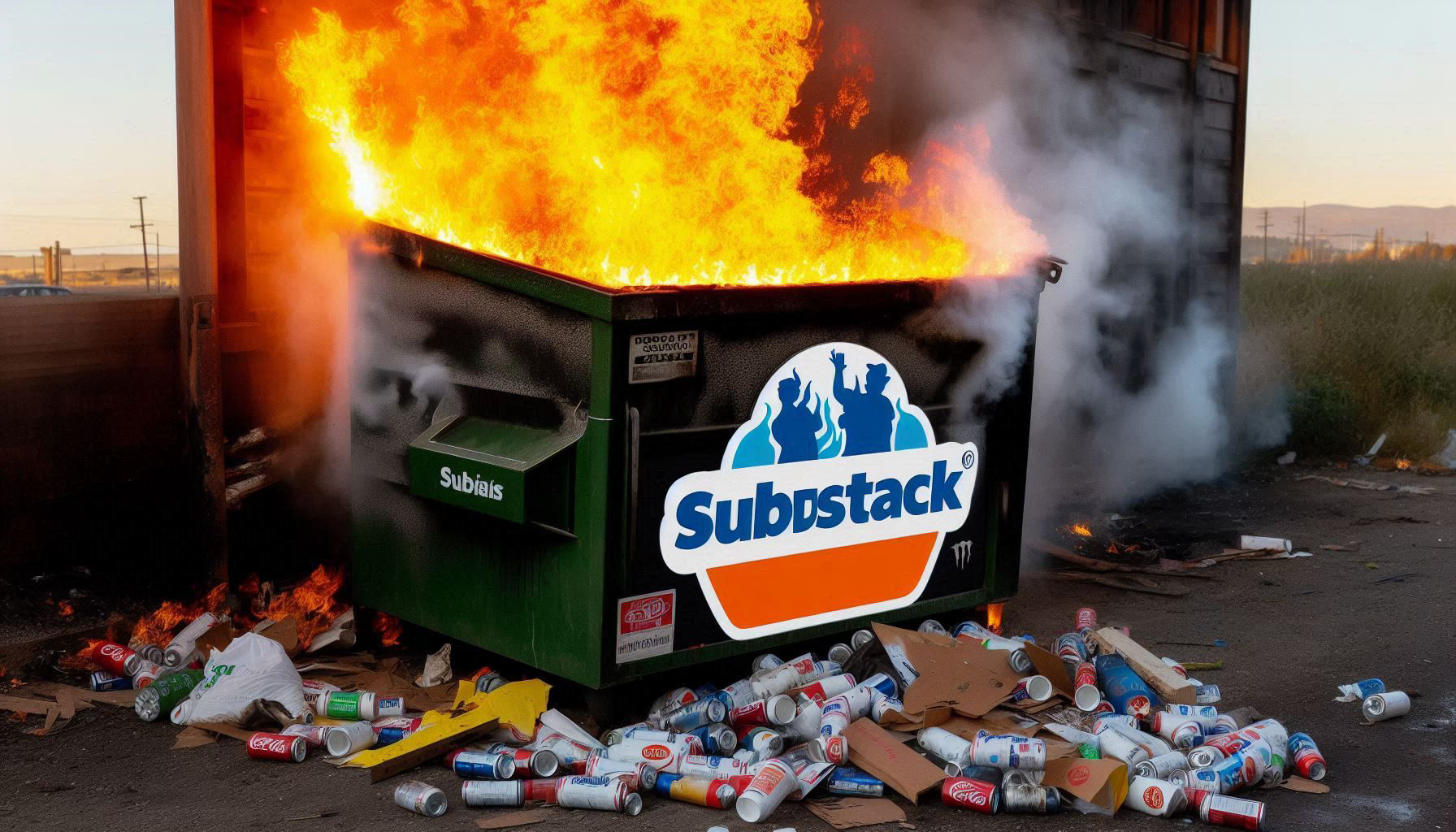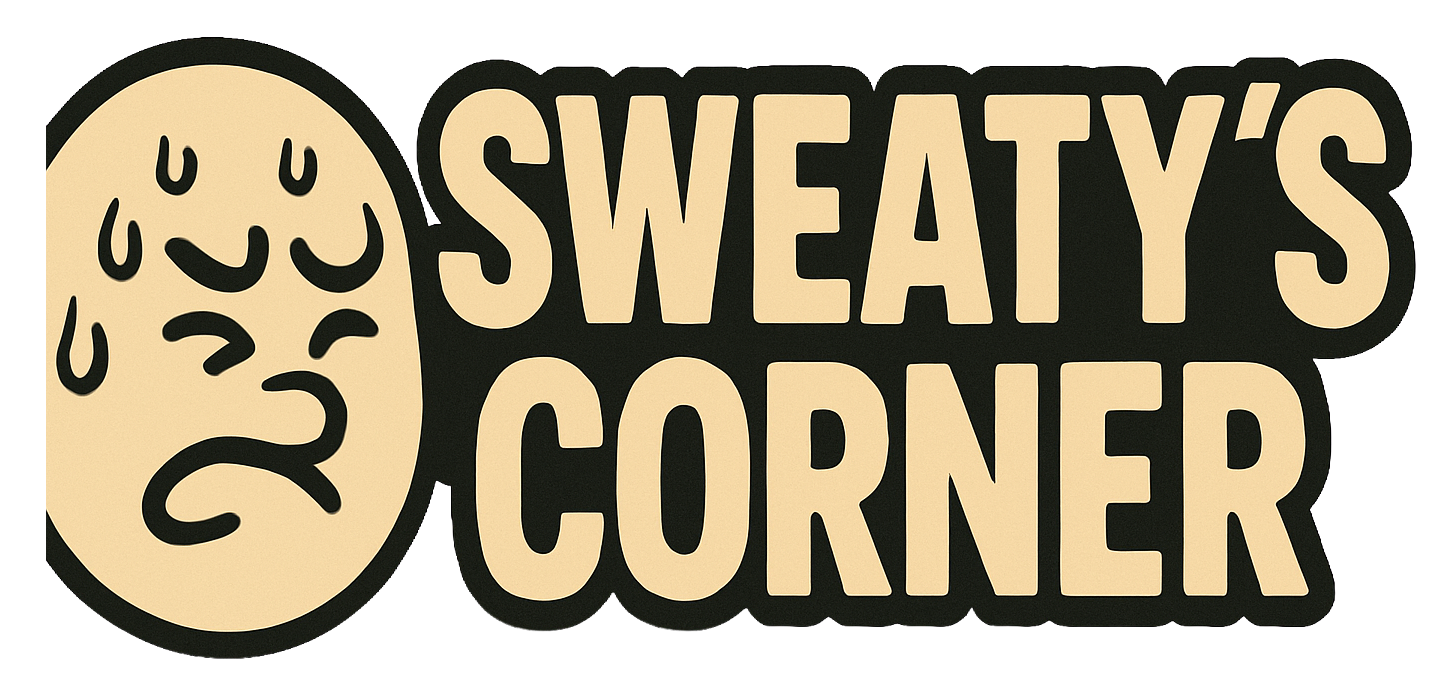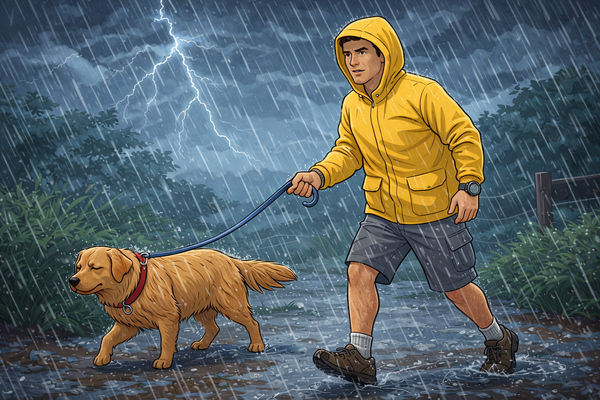Substack's Evolution
A traipse through the history of Substack, and predictions on where it is headed from my perspective.

Wherein I talk about the original goal of Substack, and how they got to where they are today.
A Caveat: I spent about two and a half years on their platform that covered a large swath of changes in their service and capabilities, as well as their flirtation (read: open embrace) of Nazis. I will try to remain objective
Substack's original premise was to provide a platform for all the independent writers (read: Bloggers) to free them from the drudgery of managing the back end, and the distribution. This loose "federation" of authors would streamline the ability for anyone to start and build an audience.
It was founded in 2017, and one of the early funders was the a16z fund (Andreesen-Horowitz) and the concept was:
That's where Substack comes in. Substack is a subscription-based newsletter publishing platform that allows independent writers to build and monetize their audience directly. By focusing on subscriptions instead of advertising as its primary business model, Substack enables writers to establish a more sustainable income stream while maintaining creative control over their content. The platform aims to offer a user-friendly interface that simplifies the process of starting and managing an email newsletter, enabling readers to discover, follow, and support the writers they enjoy. (from Contrary Research)
At the start it was akin to the WordPress commercial offer, a place that will let you setup a simple blog for free, and to pay a premium to get more services and capabilities.
Note the word "pay for" in that paragraph.
Substack's raison d'etre was to not charge. They would handle the back end, maintaining the bits/bytes/bauds and it would be totally free. Their business model was that once a writer reached a certain audience size, they would allow those authors to monetize their Substack (what they call a newsletter) they would collect a mere 10% of the money.
And this money would be enough to maintain the infrastructure to keep the site running.
To seed this, early on, Substack's founders did a savvy thing. They targeted a few independent writers who already had large audiences and gave them a stipend to move to the platform, bringing their audiences, and offering them this 90/10 split on the money they brought in.
It worked, and while they likely weren't yet breaking even, this was a wise investment, as it began to attract a LOT of new and smaller authors.
The model was "Write here for free, but when you are ready to turn on an income, just pay us 10%." And a LOT of "publishers" signed up. It was low friction, and if you were a casual blogger, not having to fuss with the infrastructure, updates to Wordpress (or whatever you used) was a blessing (that is why in early 2023 I moved to SS) was a huge incentive.
Now, some speculation: The problem was that too few of these small writers were making the jump to paid, and the infrastructure costs were growing. Tens of thousands of people writing, sending emails to millions of subscribers was beginning to be a drain, and the money from the cash cows (HCR) was not nearly enough to cover the costs.
Suddenly, when building a new Substack, writers were being urged to sign up for Stripe (the payment processor) and connecting it, even if they had no audience. And if you didn't writers got all sorts of notifications about how to make money, how to get your first hundred paid subscribers, how to get more paid subscribers.
Then they started the "Pledge" program, where they would insert nudges into free substack posts to let the audience encourage authors to go paid. I mean, look at all these people who said they would give you money if you just would connect Stripe.
Still, this was the status quo until early 2023.
The Twitter Situation
From its inception, the number one way to drive traffic to your Substack was to be active on Twitter and work your audience of connections there to cross over and read/subscribe to your Substack. And it worked brilliantly as demand generation, as you likely already had a community that you had cultivated; as it grew, your audience of subscribers would naturally follow.
Frtom 2017 through early 2023, that was the golden pipeline. It saved Substack from having to build and maintain an ecosystem to assist the authors in building their audience (and ultimately increasing the number of paid subscribers, increasing revenue).
That gravy train was threatened in October 2022 when Elon Musk was unable to get out of his drunken bid for Twitter from earlier in the spring, and had to scrounge through the couch cushions for the $44B needed to close the deal and take Twitter private.
As soon as that happened, the powers that be at Substack should have realized they needed another model for their publishers to promote and grow an audience. Alas, it was in late Winter 2023 when Musk in a fit of pique decided to block Substack URLs from Twitter as being from "dangerous" sources.
Alas, not long before that, Substack had built an app for iOS and Android so mobile users could scroll and read. The blockage from Twitter was the impetus to develop it into what is currently the "Notes" app, a feed common to the Social Media ecosystem.
It was primitive, the algorithms were just terrible, (and they remain pretty shitty to this day with really questionable things surfaced all the time), but it was a way for publishers (or authors) to talk to each other, promote their writing, and highlight what they enjoyed reading. It wasn't as good as Twitter was pre-Musk, but it was good enough.
And as time went on, it became the primary source for new subscribers.
The funny thing is that once a week or so, I will see someone post unironically abotu how great the Substack notes feed was compared to all that messy "social media". Uh, it IS social media, just not as shitty as Twitter, Insta, or Facebook.
Bolt on functionality
As time went on, the publishers (aka "authors" or "writers") wanted additional features. Podcasts were a growing vehicle, especially after Spotify inked a deal with Joe Rogan from the J0e Rogan Experience for a whopping $210M contract.
So, Substack added podcasts. Then it was video, as Tik Tok was becoming a wildfire in the socials space, and the threats to cut it off due to its Chinese provenance made it natural.
Then later still came live video, doing the Twitch or Youtube thing.
What do all these have in common? Yeah, you guessed it. Audio, video, and reliable streaming takes a shit-ton of storage, reliable transport, CDN (Content Delivery Networking caching to serve it fast world wide), a lot more bandwidth.
All this takes money, product management, and engineering talent to define, deisgn, built out and to operate.
In 2022, the outlet Tech Crunch reported:
Substack told Axios late last year that the top 10 writers on the platform collectively generate $20 million in annual revenue. According to the Times, Substack separately told investors that it saw revenue of just $9 million last year. (It told the Times directly in a story last month that it has hundreds of thousands of paid newsletters now on the platform.)
This is not a lot of money for a startup valued at the time at $650M dollars. Going on, Tech Crunch laid out the challenge Substack faced in 2o22:
The Times notes that Substack is one of many outfits right now facing new headwinds as investors snap their checkbooks shut amid rising interest rates that have severely dented tech stocks and slowed growth in the U.S. and global economies.
Still, if Substack’s broader fortunes should change, it would be the second high-flying consumer company in a16z’s recent portfolio to have truly captured the public’s imagination, then lost momentum.
Gee, an a16z company sucking wind? Stop threatening me with a good time.
But if you remember what the world was like in 2022, youe will recall relatively high inflation that the Fed was beginning to combat by raising interest rates, and that meant that the long ride of ZIRP (zero interest rate policies) was now in the reaer view mirror.
But the technology updates were requiring ever more operating capital, and the amount of revenue coming in was nowhere near enough to cover the new back end infra costs.
The first attempt: wefunding
In early 2023, attempting to swtave off what would be a punishing outside investment series, the geniuses at the helm thought to ask their "publishers" to chip in, with a "wefunding" round. This is not a terrible idea, it gives the creators in their ecosystem a bit more skin in the game (at this time the Ghost open source based platform was a short hop away, and since they integrated with Stripe, it was stupid easy to jump, take your audience with you, and pocket 100% of the proceeds.)
But since 90% of the revenue was concentrated in the top 5% of publishers, it was unlikely that they would be able to chip in enough cash to keep the wolves at bay.

Still, they managed to scrounge up $7.8M, not bad for their tip jar. I just wonder now many of those greenbacks came from people like HCR, Casey Newton, and The Bulwark... Not much me thinks.

In late 2023, they went back to the capital markets, and hence that report I shared at the top was sourced. It took almost two full years to close (that is an eternity), and to get it over the line, the founders have acknowledged that their funding model is too limiting, and that some "tasteful, targeted" ads would not be too objectionable.
I read that to mean that they are furiously building an internal tool for ad sales, placement, and revenue optimization.
I also suspect that they will not share this ad revenue to the vast majority of their publishers, the whales will get some slice, but they will jigger the metrics to make it near impossible for the small (say less than thousands of paid subscribers) to participate, and the free to hundreds of paid sub 'stacks will likely have their content flooded with display ads, putting money in the pockets of Substack, but just pissing off the small fries' audiences with an abundance of garbage.
The Enshittification
I suspect that sometime in the first quarter of the year, prospective investors began pressuring Substack to demonstrate that they can amplify their revenue generation. As a free Substack, I noticed some wonkiness in my traffic, and subscriber counts and new subscribers. This accelerated starting in mid second quarter, and I wrote about it here:

And then the funding round closed (thanks to Dave Karpf for breaking the news) and that was when I knew my time was up.

I joined Substack in February 2023 to not have to manage the infrastructure (the VM, the install, and the data). I gave up a ton of flexibility in configuration and edting capability (the Substack editor is truly a terrible experience, and unreliable) for mindless posting. 665 posts later, I pulled up stakes and moved back to Ghost.
Now I have to pay for the hosting and the mail transport, but dammit, it is MINE!
Thank you for reading this if you get this far. I appreciate you and your attention.







